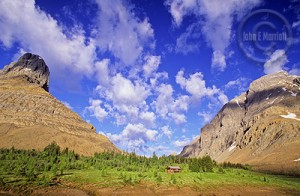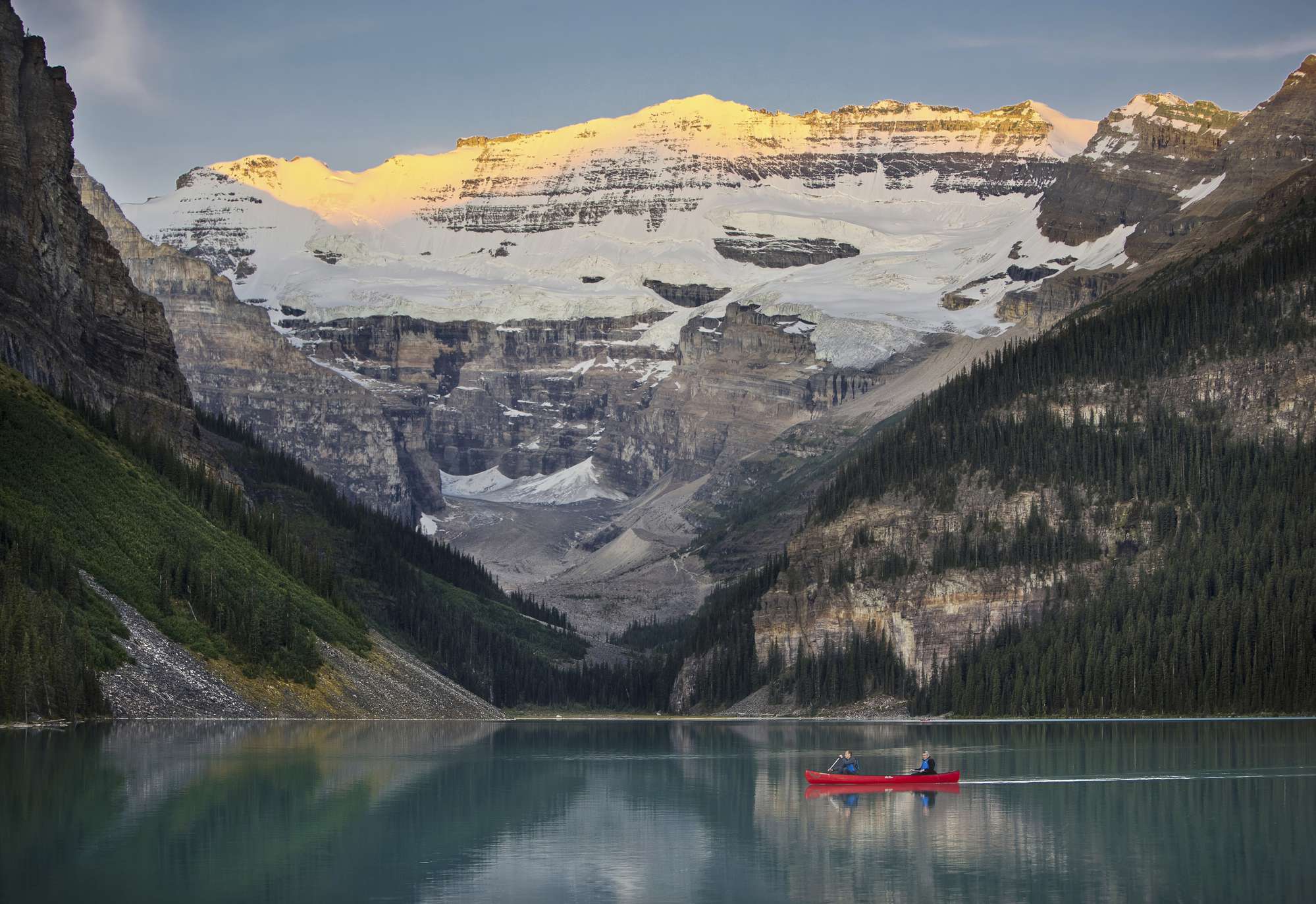There’s plenty to do in Lake Louise, and it’s sure to occupy a good portion of your Rockies vacation, and for good reason. But there’s plenty of other great things to see around the Canadian Rockies, including Kootenay National Park.

Kootenay National Park is fairly close to Lake Louise and there’s a ton to see and do when you get there, so it’s definitely worth some of your vacation time. To get there jump on Highway 93 and head south. When you get to the road to Radium Hot Springs, you’re well on the road.
Kootenay National Park isn’t the biggest in the Canadian Rockies, but it’s one of the most interesting parks. Here you can go from a shady, cool canyon to a hot desert in the span of one day. You’ll be treated to the incredible scenery of a burned forest and the brilliant colors of vermilion rocks. All of this in a one day trip from Lake Louise.
When you first arrive at Kootenay National Park, coming from Lake Louise, you’ll see a large burned area. This is the Vermillion Pass Burn, remnants of a 1968 forest fire. It may not look like much at first, but look close – the area is one of the best in the Canadian Rockies for spotting wildlife.
It’s a great area for seeing moose that come to nibble on the ends of the bushes, which get a lot of sunlight and grow really well. Those same bushes also produce berries that attract bears. There are a number of flowers in the area as well, which attracts tons of hummingbirds. To top it off, the rare and rarely-seen lynx can be spotted in this part of the Kootenay, where they hunt snowshoe hares that live along the edge of the burn.
If you want to take a closer look at the burn, there are some great trails here, including the Arnica Lake/Twin Lakes trailhead is a good place to start. At the short Firewood trail you can learn more about a fire’s role in renewing the landscape.
There are two other trails worth checking out. One trail follows the edge of Marble Canyon, a short but very deep crevasse. Bridges across the canyon provide excellent views into the interior. The other trail goes to the Ochre Beds and Paint Pots. Sediments that flow from cold springs runoff here were mined for use as paints.
Next on your trip in Kootenay is Mt. Wardle Mineral Lick. Here you’ll find the official symbol of Kootenay National Park: the mountain goat. Nearly 300 of them live in the park, and if you want to see them, you’ve come to the right place. This natural mineral lick is right by the side of the highway – just look for the sign. In May and June, especially, they like to come to the area to lick the dirt. Minerals such as calcium are mixed in with the soil, which the goats – and particularly the nannies who have just given birth – require.
In fact, wildlife is among the best of reasons to visit Kootenay. Much of the park sits in the low-elevation Kootenay Valley. What does low elevation mean? Primarily, it means temperate weather: an easier winter and a longer, more dynamic summer. And that means wildlife thrives here. Coyotes, black bears, moose, elk, deer; all roam the grassy meadows and open forests. Keep an eye out, because you’re almost sure to see something. We urge you to keep a very careful eye out at dusk, when the something you might see could easily be right on the road in front of you!

